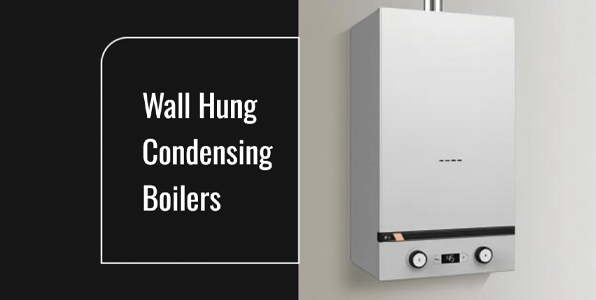Video: Wall Hung Condensing Boilers: Everything You Need to Know
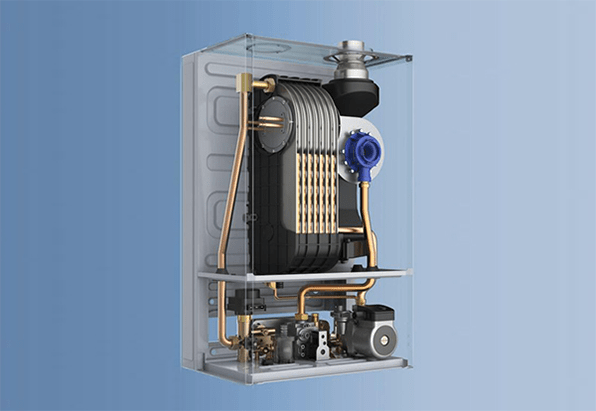
Figure 1: The inner structure of a wall-hung boiler.
Wall-hung boilers (for radiator heating or floor heating and water heating) have become the first choice of heating equipment for more and more families. Among them, wall hung condensing boilers are favored by the high-end heating market. Why are wall-hung condensing boilers so popular? Today let’s learn about the condensing wall-hung boiler in detail!
1. What is a Wall Hung Condensing Boiler? Working Principle of Wall Hung Condensing Boiler
Condensing technology is the most cutting-edge energy-saving technology in today's wall-mounted boiler industry.
This technology used in the condensing wall-hung boiler can recover the waste heat in the flue gas. The exhaust
temperature can be reduced to about 40°C, and the latent heat of water vapor in the flue gas can be fully absorbed
and utilized.
Coupled with premixed combustion technology that gas and air are mixed in proportion, the combustion is more
complete during the combustion process, the energy consumption of the condensing wall-hung boiler is lower, and the
environmental protection indicators are also more ideal.
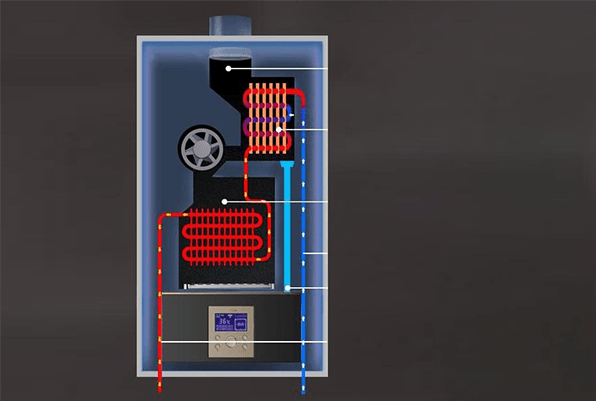
Figure 2: Working principle diagram of condensing boiler.
2. Types of Wall Hung Condensing Boiler
Condensing wall-hung boilers can be divided into two types according to their combustion methods, one is fully
premixed combustion and semi-premixed combustion.
Fully premixed combustion condensing boiler: The so-called fully premixed combustion means that the
gas and air are
fully mixed before entering the combustion chamber, thus ensuring high combustion efficiency and quality. However,
fully premixed combustion condensing boilers have high requirements for the quality of natural gas. If low-purity
natural gas is used, it is very easy to cause clogging and damage to the nozzles.
Semi-premixed combustion condensing boiler: Different from fully premixed combustion, the mixing
degree and quality
of natural gas and air are lower. Therefore, its thermal efficiency is lower than that of full premixed combustion.
Semi-premixed combustion condensing boilers have lower quality requirements for natural gas and will target a wider
user group.

Figure 3: Working principle diagram of fully premixed condensing boiler.
A. Hot water outlet C. Sanitary hot water outlet G. Gas inlet F. Tap water inlet R. Water return inlet
3. Condensing Boiler FAQs: Learn More about Condensing Boilers
3.1 What are the Combustion Methods of Wall Hung Condensing Boilers?
Condensing wall-mounted boilers are divided into two types: atmospheric combustion (semi-premixed combustion) and
fully premixed combustion.
The condensing wall-mounted boiler using atmospheric combustion mode fully absorbs the gas combustion products
through two heat exchangers: the sensible heat in the flue gas and the latent heat of water vapor.
The condensing wall-hung boiler that adopts the fully premixed combustion method fully mixes air and gas in advance
before burning. It is a completely new combustion method that is different from ordinary wall-hung boilers.
Atmospheric combustion means that a portion of air is premixed with before the gas reacts, but the
amount of oxygen required for combustion is not reached.
●Advantages: High flame temperature, medium flame length, obvious outer flame, relatively complete combustion, and
simple equipment.
●Disadvantages: Too large excess air coefficient and large heat waste.
Fully premixed combustion means that before the gas combustion reaction occurs, the gas and all the
air required for combustion are mixed evenly at one time according to the optimal combustion value, and can be
completely burned instantly after reaching the combustion zone.
●Advantages: Infrared combustion state, short flame or no visible flame, high temperature, complete combustion, few
harmful gas compounds, and high thermal efficiency.
●Disadvantages: Complex control equipment and procedures.
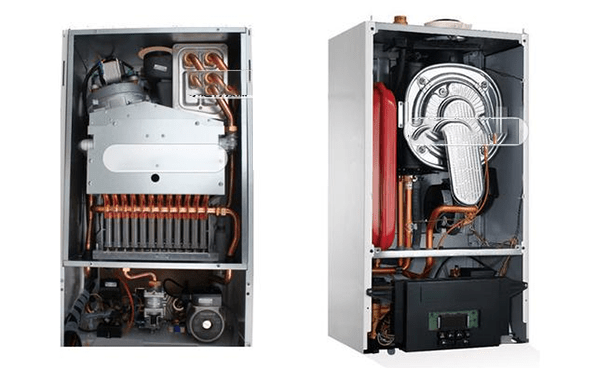
Figure 4: Boiler with secondary heat exchange vs. Fully premixed wall-hung boiler.
3.2 In What Aspects are the Energy Savings of Wall Hung Condensing Boilers Mainly Reflected?
1. Ultra-low flue gas temperature: In order to achieve the condensation effect and turn the water
vapor in the flue gas into water, the exhaust gas temperature must be lowered to reach the dew point temperature of
water vapor (55°C), which greatly reduces the heat loss (note: the exhaust temperature of ordinary wall-mounted
boilers is about 110℃-200℃, and that of the condensing boiler is between 30℃-50℃). This part of energy accounts for
about 30% of the total energy savings.
2. Adopt fully premixed combustion: Air and gas are fully proportioned in advance before
combustion. This combustion is the top combustion method in the combustion industry of gas appliances. Specifically,
it has fast combustion speed, short flame, or even no flame, high flame temperature, complete combustion, and small
excess air coefficient (that is, the flue gas emission is small. The excess air coefficient refers to the ratio of
the amount of air required for 1 cubic meter of gas combustion to the actual amount of air supplied). This part
probably accounts for about 20% of the total energy savings.
3. Fully enclosed combustion: When condensing wall-mounted boilers being designed, the fully
enclosed combustion is generally adopted, and the combustion flame is surrounded by heat exchangers, thus
effectively reducing the heat of the boiler itself. However, ordinary wall-mounted boilers only have the main heat
exchanger above the flame, which will cause heat loss around it. This part may roughly account for about 20% of the
total energy savings.
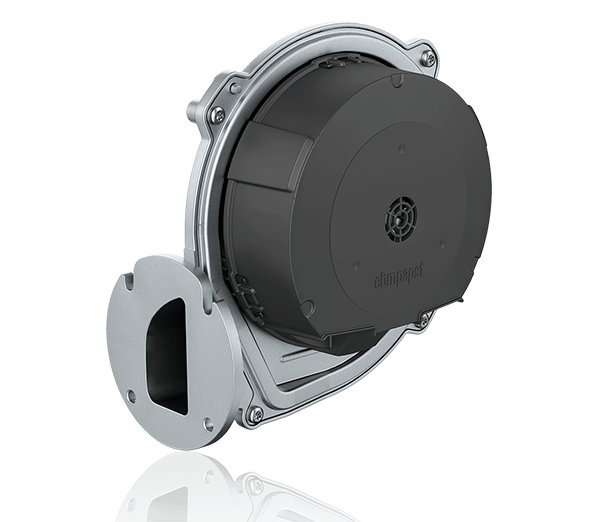
Figure 5: EBM gas blower.
3.3 What Kind of Wall-Hung Boiler is a True Wall Hung Condensing Boiler?
(1) Adopt fully premixed combustion technology.
(2) Low exhaust gas temperature, basically the same as the return water temperature.
(3) Have a certain amount of condensed water discharged.
(4) The air volume can be adjusted to make combustion more complete and the excess air coefficient reasonable.
(5) The main heat exchanger is made of acid-resistant materials, such as stainless steel, silicon aluminum.
Of course, there are also some wall-mounted boilers on the market that use atmospheric combustion, but a secondary
heat exchanger is added to the boiler to condense the flue gas.

Figure 6: Internal structure of fully premixed wall-hung boiler.
3.4 Why is the Wall Hung Condensing Boiler the Future Development Trend?
The condensing wall-hung boiler is a new type of energy-saving and environmentally friendly product. In today's era of energy shortage, the condensing boiler is the most energy-saving product among wall-hung boiler products, so it will inevitably become the direction of development.

Figure 7: Application of wall hung boiler.
3.5 Why Should the Condensing Boiler Heat Exchanger be Made of Stainless Steel?
Because condensed water is acidic and highly corrosive. The gas component contains sulfide, so the water generated
after combustion is also acidic, which has a strong corrosive effect on ordinary copper heat exchangers. So it is
necessary to use materials with strong corrosion resistance. At the same time, this material must also have strong
plasticity, good thermal conductivity, and low cost. After comparison, experts finally concluded that stainless
steel and cast silicon aluminum are the available materials.
O&Kmarts can provide ebm-papst gas blowers for wall mounted
boilers. If you have any need, please feel free to contact us!



